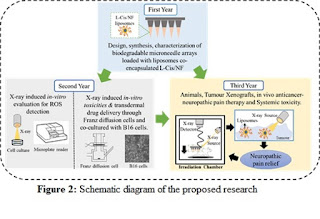LUMEFANTRINE
MECHANISM OF ACTION –
The exact mechanism by which lumefantrine exerts its antimalarial effect is unknown. However, available data suggest that lumefantrine inhibits the formation of ß-hematin by forming a complex with hemin and inhibits nucleic acid and protein synthesis.
PHARMACOLOGICAL ACTION –
Lumefantrine is a blood schizonticide active against erythrocytic stages of Plasmodium falciparum.
It is thought that administration of lumefantrine with artemether results in cooperate antimalarial clearing effects. Artemether has a rapid onset of action and is rapidly cleared from the body. It is thus thought to provide rapid symptomatic relief by reducing the number of malarial parasites.
THERAPEUTIC USES –
1. This is used to treat malaria in adults and children.
2. This is used to kill the malaria parasites living inside red blood cells.
3. This product is not used to prevent malaria.
SIDE EFFECTS –
Headache
Dizziness
Loss of appetite
Weakness
Fever
Chills
Tiredness
Muscle/Joint pain
Nausea and vomiting
Abdominal pain
Cough
Trouble sleeping
DRUG-DRUG INTERACTION –
Lumefantrine + Chloroquine = risk or severity of adverse effects can be increased.
Lumefantrine + Carbamazepine = serum concentration of Lumefantrine can be decreased.
Lumefantrine + Citalopram = it may increase the QTc-prolonging activities of Lumefantrine.
Reference- Tripathi KD "Essential of medical pharmacology" 7th edition, page no- 818,819,832,833
MECHANISM OF ACTION –
The exact mechanism by which lumefantrine exerts its antimalarial effect is unknown. However, available data suggest that lumefantrine inhibits the formation of ß-hematin by forming a complex with hemin and inhibits nucleic acid and protein synthesis.
PHARMACOLOGICAL ACTION –
Lumefantrine is a blood schizonticide active against erythrocytic stages of Plasmodium falciparum.
It is thought that administration of lumefantrine with artemether results in cooperate antimalarial clearing effects. Artemether has a rapid onset of action and is rapidly cleared from the body. It is thus thought to provide rapid symptomatic relief by reducing the number of malarial parasites.
THERAPEUTIC USES –
1. This is used to treat malaria in adults and children.
2. This is used to kill the malaria parasites living inside red blood cells.
3. This product is not used to prevent malaria.
SIDE EFFECTS –
Headache
Dizziness
Loss of appetite
Weakness
Fever
Chills
Tiredness
Muscle/Joint pain
Nausea and vomiting
Abdominal pain
Cough
Trouble sleeping
DRUG-DRUG INTERACTION –
Lumefantrine + Chloroquine = risk or severity of adverse effects can be increased.
Lumefantrine + Carbamazepine = serum concentration of Lumefantrine can be decreased.
Lumefantrine + Citalopram = it may increase the QTc-prolonging activities of Lumefantrine.
Reference- Tripathi KD "Essential of medical pharmacology" 7th edition, page no- 818,819,832,833



No comments:
Post a Comment